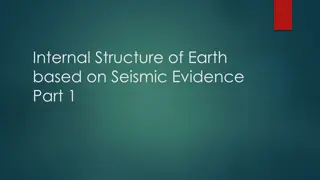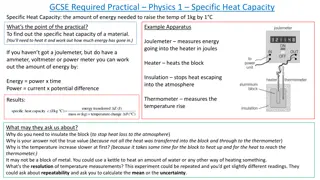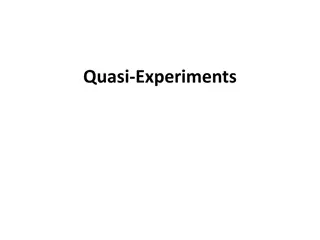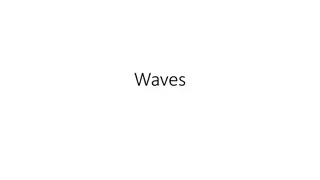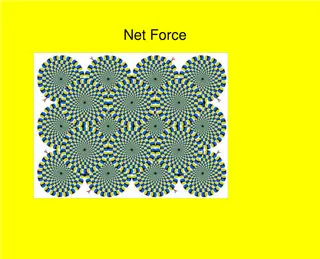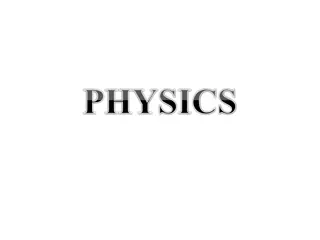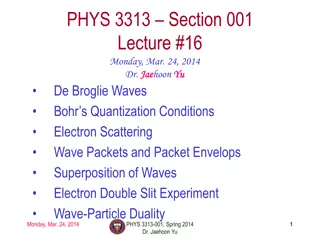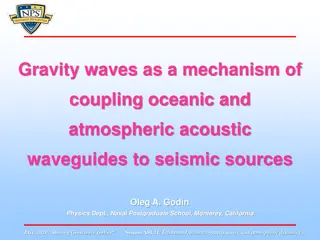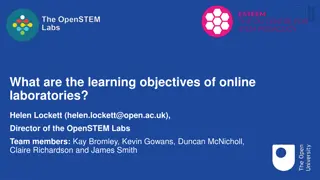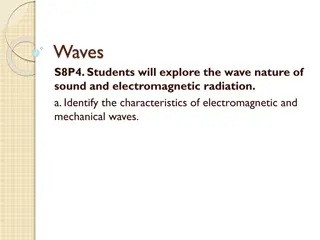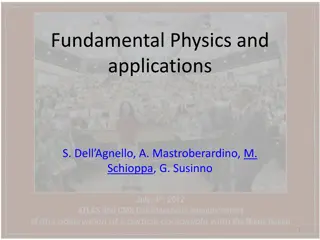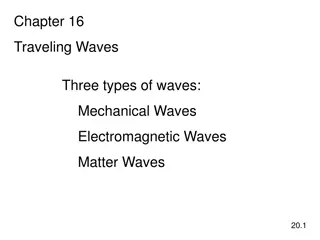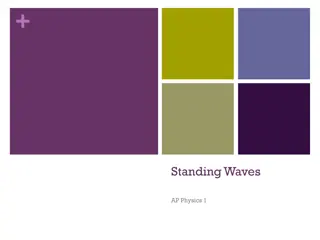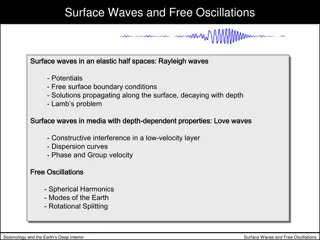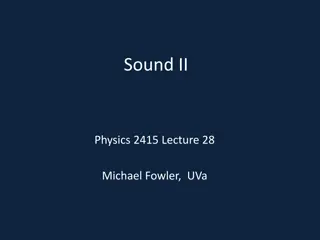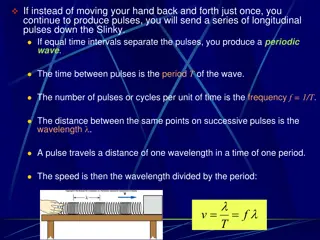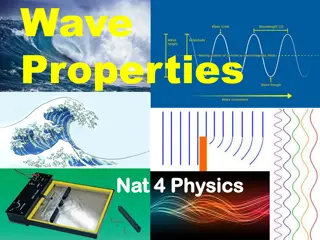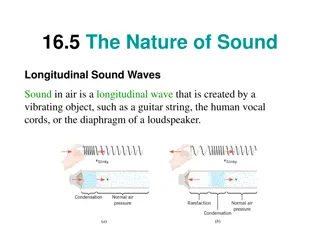Practical Physics Experiments for GCSE Force and Waves Concepts
Explore crucial GCSE physics practical experiments focusing on force, acceleration, extension of a spring, and wave properties in water and a solid. Understand the relationships between mass, force, acceleration, extension, frequency, wavelength, and wave speed through hands-on activities and data analysis. Discover key concepts, sources of error, variables, data interpretation, limitations, and ways to enhance experimental accuracy.
Download Presentation

Please find below an Image/Link to download the presentation.
The content on the website is provided AS IS for your information and personal use only. It may not be sold, licensed, or shared on other websites without obtaining consent from the author.If you encounter any issues during the download, it is possible that the publisher has removed the file from their server.
You are allowed to download the files provided on this website for personal or commercial use, subject to the condition that they are used lawfully. All files are the property of their respective owners.
The content on the website is provided AS IS for your information and personal use only. It may not be sold, licensed, or shared on other websites without obtaining consent from the author.
E N D
Presentation Transcript
GCSE Required Practical Physics 2 Force and acceleration Example Apparatus What s the point of the practical? To find out what happens to the acceleration when we change the mass. And to find out what happens to the acceleration when we change the force. Data logger and light gate - Measures velocity or acceleration Force (N) = mass (kg) x acceleration (m/s2) Acceleration (m/s2) = change in velocity (m/s) time (s) Masses make the trolley (car) move Results: The more force, the more acceleration. The more mass, the less acceleration. What may they ask us about? - They may get you to work out acceleration from force and mass (easy) or give you the change in velocity and time so you need to use both equations above. - State one possible source of error (friction slows the trolley down, the trolley doesn t go in an exact straight line, the masses hit the floor and stop pulling on the string) - What is the IV, DV and control variables for each part of the experiment? (remember, if you re changing the mass, the force should stay the same, if you re changing force, the mass should stay the same only one thing changes) - Interpret graphs of results and use them to calculate or make predictions:
GCSE Required Practical Physics 2 Force and extension of a spring Extension = how much the length has increased from it s original length What s the point of the practical? To find out the relationship between force and extension. Example Apparatus Weights provide a force (N) Results: Limit of proportionality Spring - stretches Hooke s Law: extension is directly proportional to the force applied, as long as the limit of proportionality is not exceeded Metre rule measures the length of the spring (before and after) What may they ask us about? - Describe the relationship (directly propotional). Label the limit of proportionality (where it s no longer a straight line) - What error could cause the extension to NOT start at zero (if you measured, the length and not the extension. The extension should be zero with no weights, but the length of the spring will be a few cm) - What is the IV (force), what is the DV (extension), comment on repeatability, resolution, etc
GCSE Required Practical Physics 2 Waves in a tank (water) Wave speed (m/s) = frequency (Hz) x wavelength (m) What s the point of the practical? To find out how wavelength, frequency and wave speed are related. Example Apparatus Oscillating paddle moves up and down to produce waves Results: Speed = frequency x wavelength. If you double the double the frequency, the wavelength is halved and vice versa. Wave speed stays the samebecause it s always the same material (string) What may they ask us about? - Explain why the wave speeds you calculate are all about the same but not identical. (Wave speed is the same in water but it s hard to be 100% accurate with measurements each time because it s hard to see where exactly the waves are, the waves keep moving, some waves are reflected) - How could you improve the accuracy of measurements? (add insulation to stop reflected waves, use a bigger pool, brighter light, sharper paddle to get nice clean waves) - Comment on repeatability, reproducibility, range, uncertainty and calculate means
GCSE Required Practical Physics 2 Waves in a solid (string) Wave speed (m/s) = frequency (Hz) x wavelength (m) What s the point of the practical? To find out how wavelength, frequency and wave speed are related. Example Apparatus Results: Speed = frequency x wavelength. If you double the double the frequency, the wavelength is halved and vice versa. Wave speed stays the samebecause it s always the same material (string) Weight hold the String tight (taut) Frequency generator and vibrator (oscillator) make the string vibrate to produce waves. What may they ask us about? How could you measure the waves more accurately? (use a different colour or width string to make it easier to see the waves) Comment on repeatability, reproducibility, uncertainty and calculate means
GCSE Required Practical Physics 2 Surfaces and radiation Infrared Radiation: electromagnetic waves that heat things up. Absorb: when something takes in or soaks up something (don t say attract!) Emit: when something gives off something Example Apparatus What s the point of the practical? To find out how the colour and texture of the surface affects how much heat (radiation) is absorbed or emitted Results: Matt black surfaces absorb and emit much more radiation than shiny smooth surfaces. Heated from the outside Heated from the inside What may they ask us about? - Independent, dependent and control variables (same sizes, same volumes, same thickness, starting temp etc) - Why should you put lids on each container (to reduce heat loss through convection) - Resolution of measurements (1 C?), repeatability, reproducibility, calculating means etc - Why won t you get exactly the same measurements if you repeat the experiment? What are the sources of error? (hard to read the temp at exactly the right time, slightly different volumes, slightly different starting temperatures, can may be warm already)


